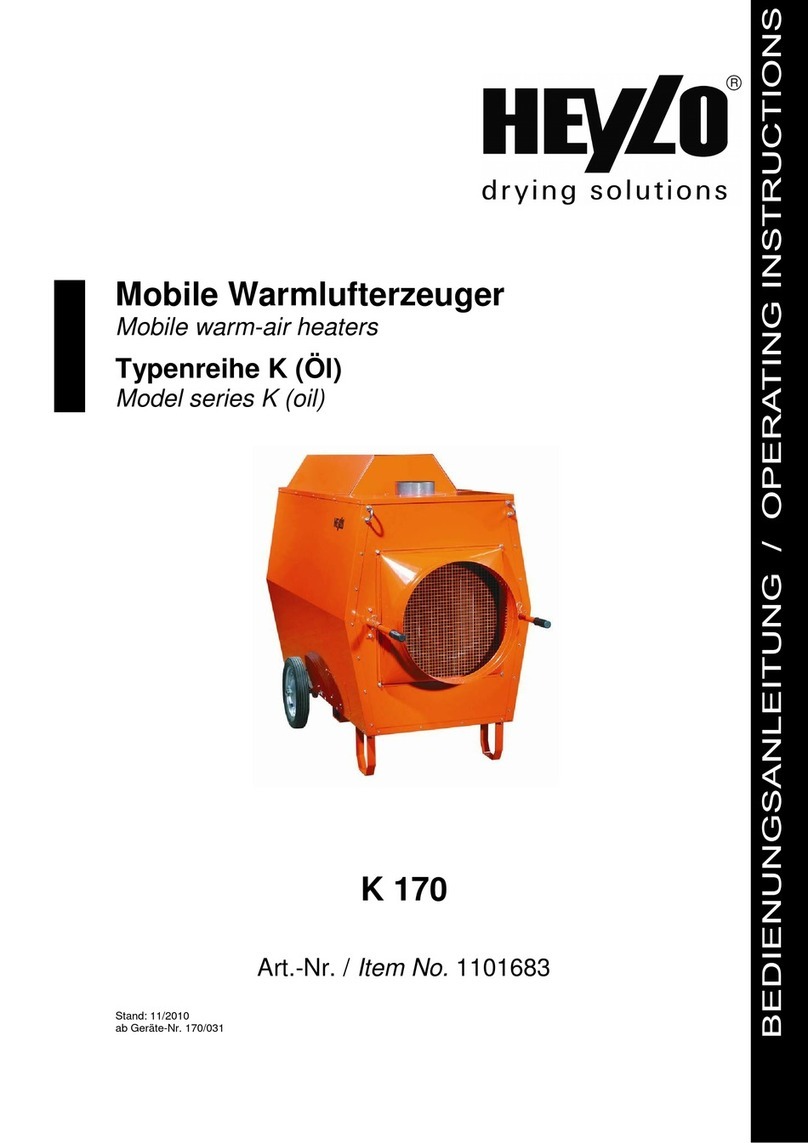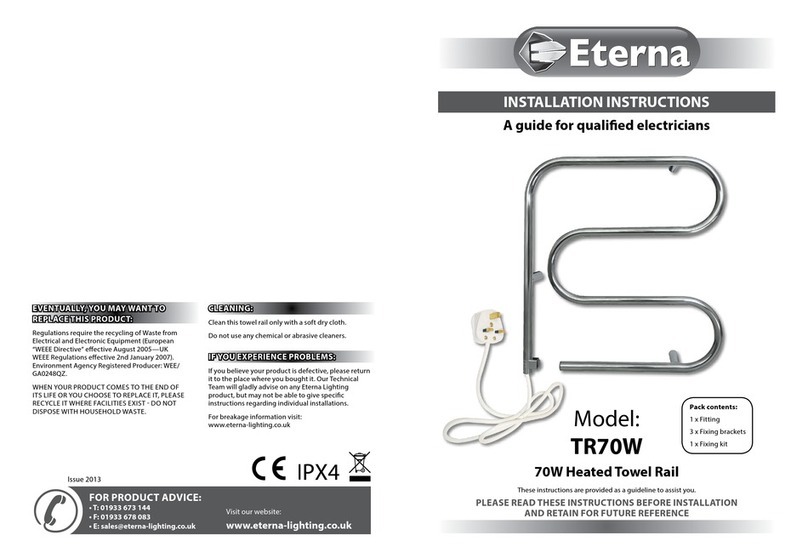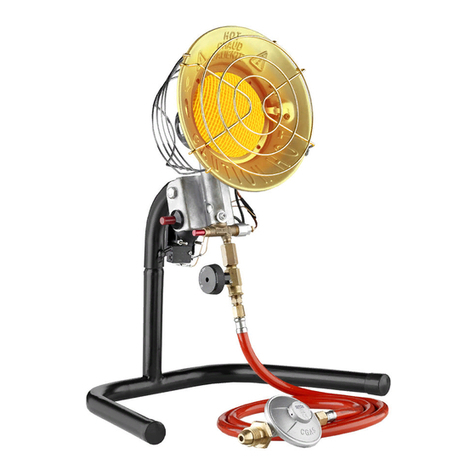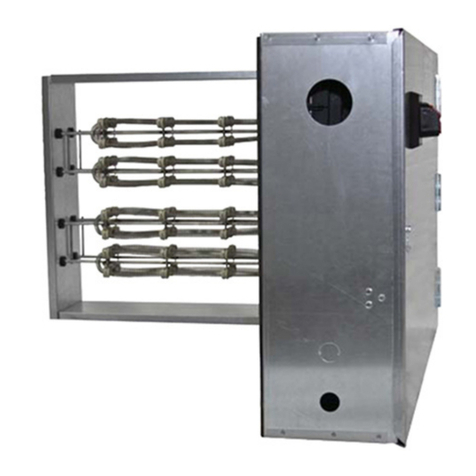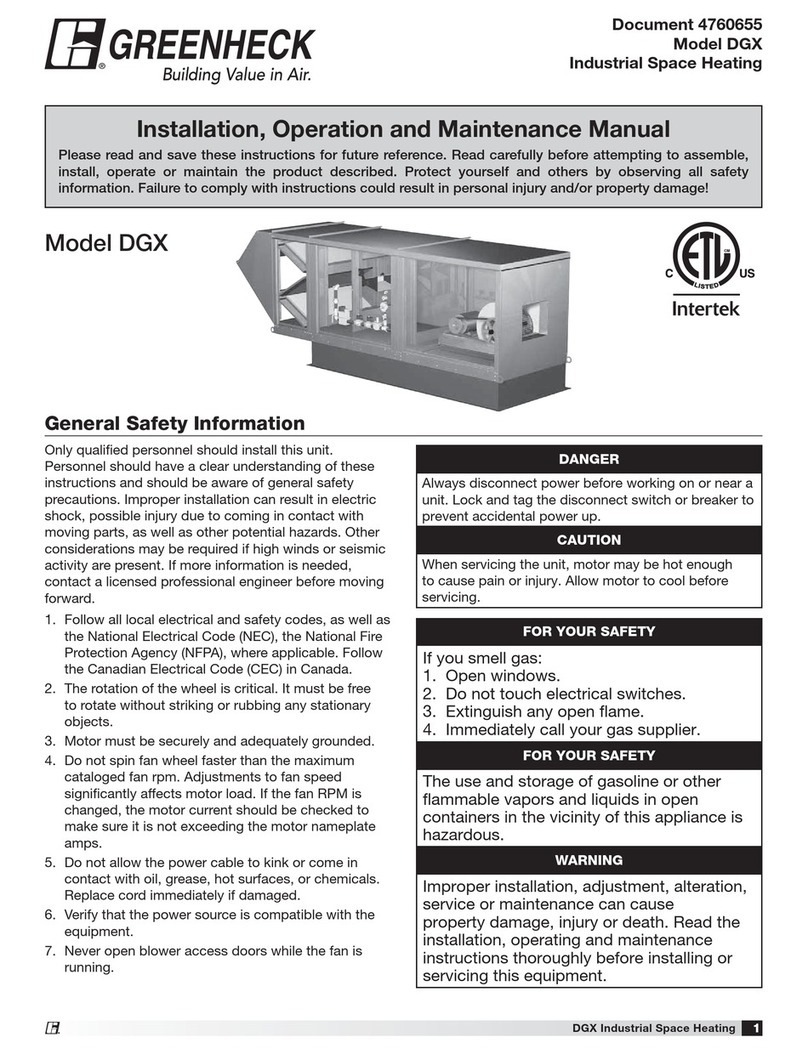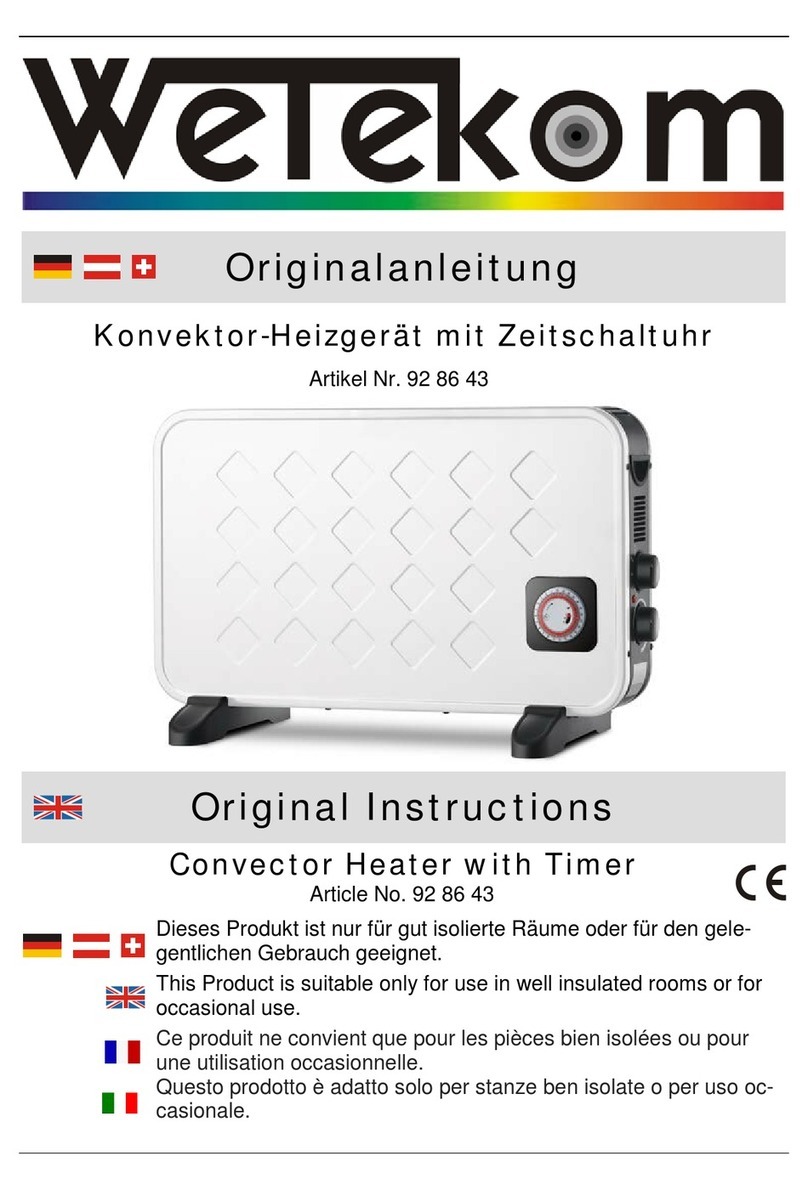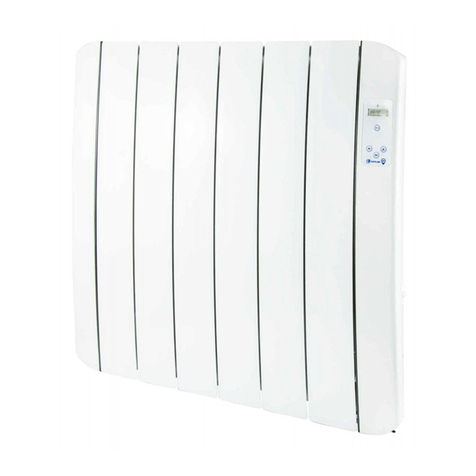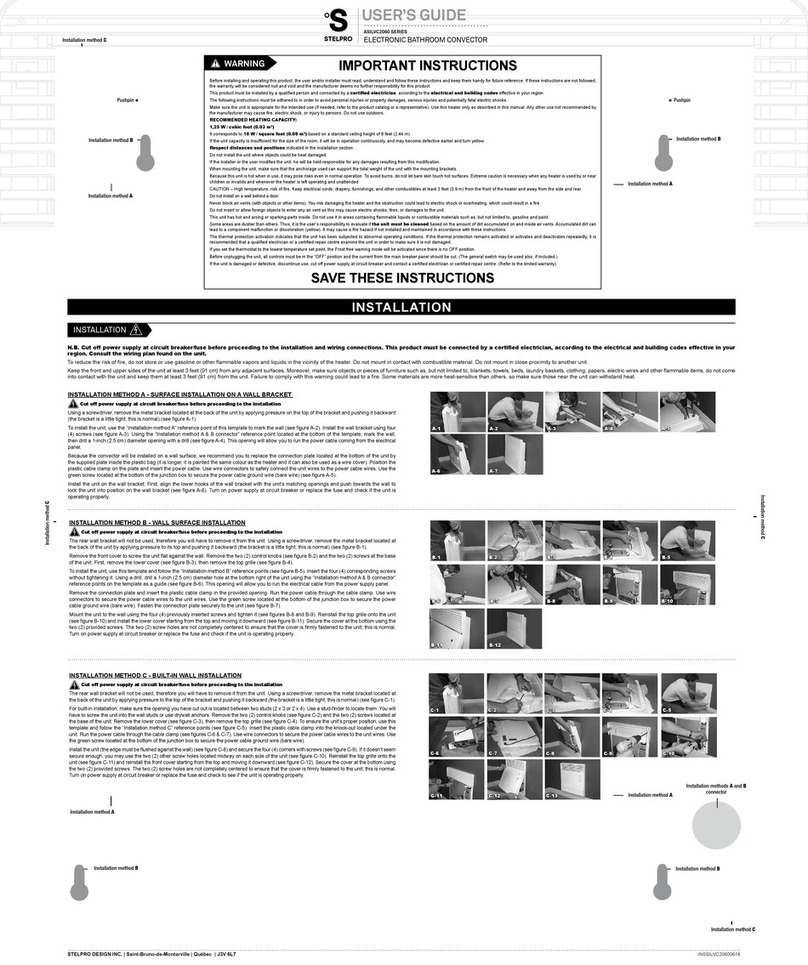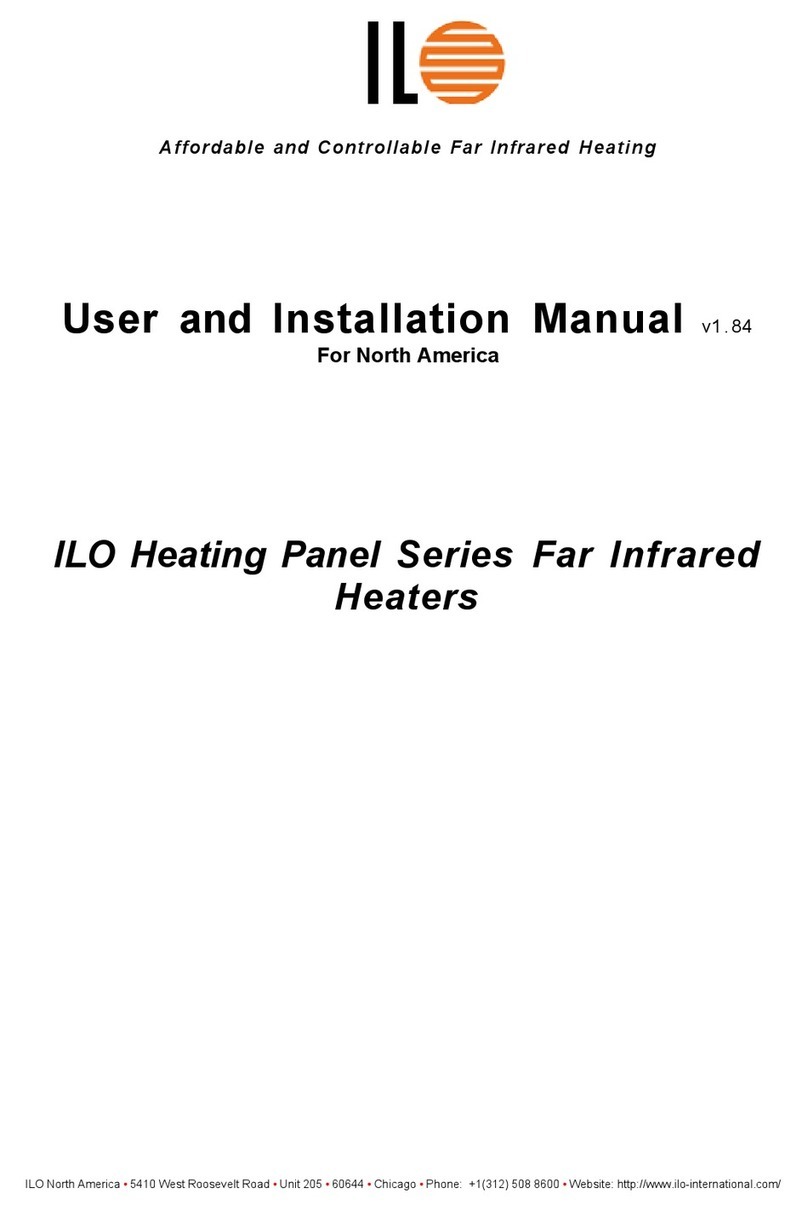
Troubleshooting Guide
A duct heater must be installed according to the
installations instructions, wiring diagram and labeling
supplied with the heater.
Listed below are some important items when installing
an electric duct heater:
1. Never operate a duct heater without airflow.
The heater must always be interlocked with the
fan. This may be accomplished by either an
airflow switch or fan interlock relay.
2. Never operate heater without achieving at least
the minimum airflow required. Always refer to
the installation instructions and the nameplate
label to determine minimum air velocities based
on inlet air temperature. If the minimum airflow
requirements are not present the heater will not
function properly and safely
(see Figure 3).
3. Never operate the heater with uneven airflow.
The minimum airflow requirements must be
present at all points over the heater face (see
Figure 3).
4. The air must be filtered. The incoming air must
be free from all debris, combustible particles,
and hazardous vapors.
5. Locate the heater at least 24 in. from an elbow
or turn (see Figure 4).
6. Locate the heater at least 48 in. from the
following (see Figures 5-9):
• heat pump or central air
• canvas duct connector or transition
section for change in duct size.
• downstream from an air handler.
• upstream from a humidifier
• downstream from an air filter
• fan
7. Never install a standard heater into a duct with
an internal obstruction. An obstruction can
block airflow at the temperature limit controls
and element terminations. If this situation
exists, it can be corrected by using a heater
with recessed control box and reduced wrapper
size. This situation is common with internally
insulated ducts (see Figure 10).
8. Never insulate the exterior of the control box.
The control must be completely accessible and
located where ventilation can be provided at all
times (see Figure 11).
9. Never install a heater near a double blower
outlet. A heater must be installed far enough
away from a double blower outlet so that even
and proper airflow is present or separate duct
heaters placed in the duct runouts of each
blower (see Figure 12).
500 fpm
470 fpm
780 fpm
EXAMPLE: IF 780 fpm IS REQUIRED
EXAMPLE: IF 780 fpm IS REQUIRED
EXAMPLE: IF 780 fpm IS REQUIRED
CORRECT
MIN. AIRFLOW AND EVEN AIR
DISTRIBUTION ARE PRESENT
INCORRECT
MIN. AIRFLOW AND EVEN AIR
DISTRIBUTION ARENOT PRESENT
INCORRECT
MIN. AIRFLOW IS NOT PRESENT
FIG. 3
470 fpm
470 fpm
780 fpm
780 fpm
780 fpm
780 fpm
FIG. 4
FIG. 5
Heat Pump or Air Conditioner
24" MIN.
48" MIN.
HEAT PUMP OR
AIR CONDITIONER
HEATER
DUCT
INCORRECT
CORRECT
FIG. 5
Transition Change
HEATER
48" MIN. 48" MIN.
HEATER
DUCT
DUCT
6Electric Duct Heaters








